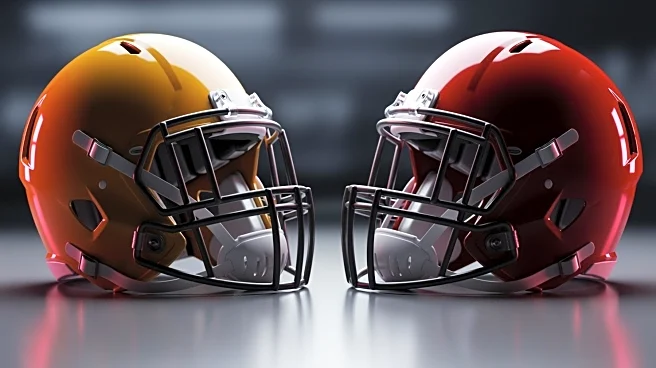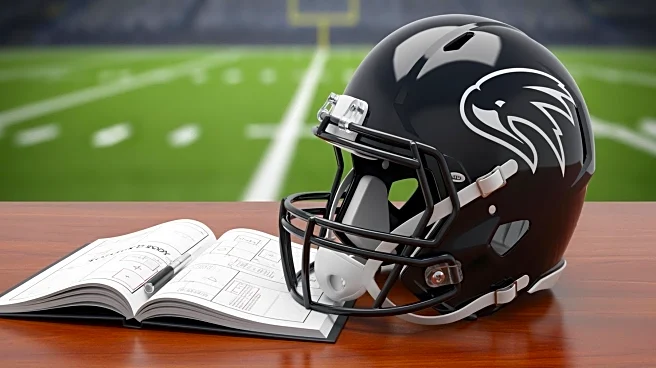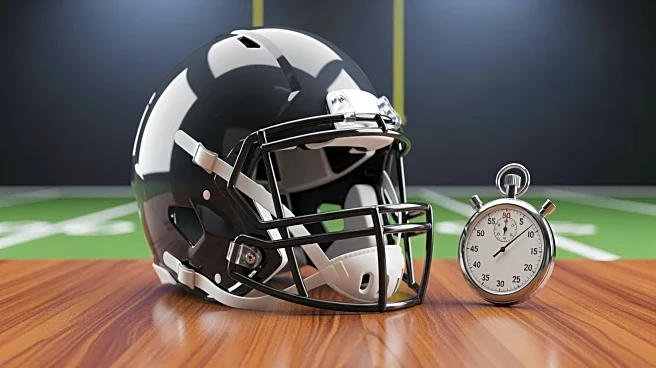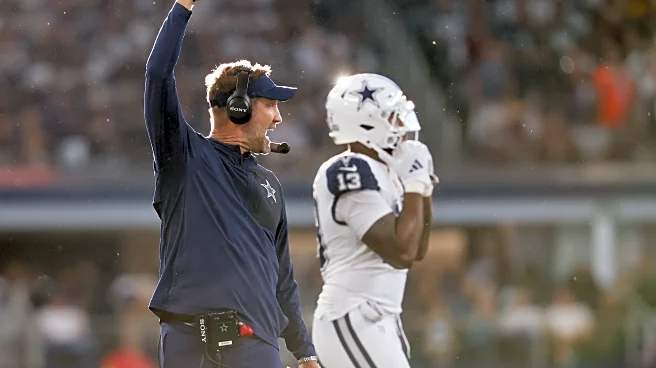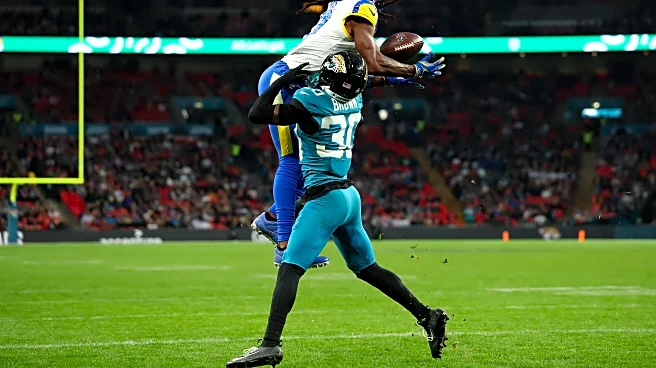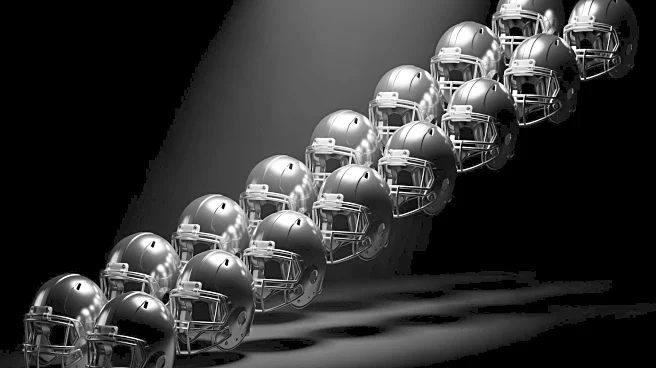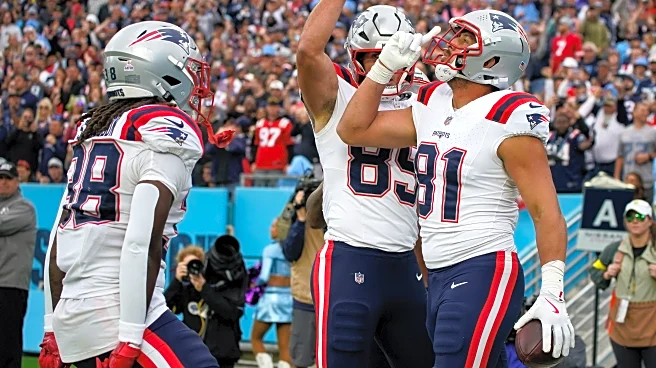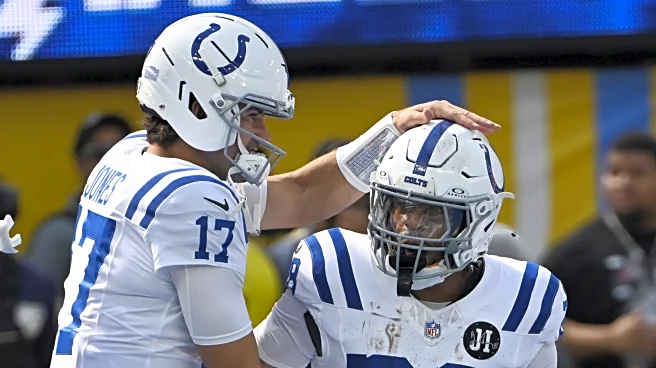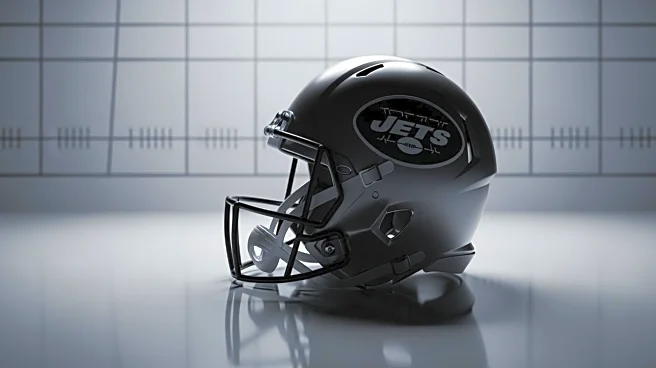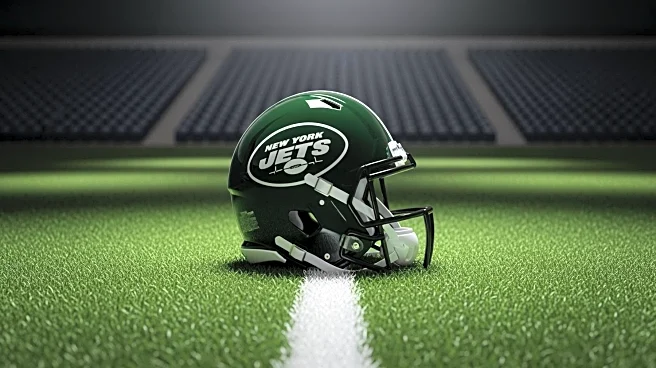What's Happening?
As the 2025 NFL season approaches its midpoint, teams are gearing up for the in-season trade deadline set for November 4th. This period allows teams to make strategic moves to enhance their rosters or accumulate
future draft capital. Notable teams like the Buffalo Bills and Kansas City Chiefs are expected to seek last-minute upgrades to bolster their title chances, while teams such as the New Orleans Saints and New York Jets might look to trade players for future assets. Several players have already been traded, including Cam Robinson and Tyson Campbell to the Cleveland Browns. However, many other players remain potential trade candidates, categorized into tiers based on their impact and value. These include high-profile names like Chris Olave and Alvin Kamara from the Saints, who could significantly influence a team's performance if traded.
Why It's Important?
The trade deadline is a critical juncture for NFL teams, impacting their strategies for the remainder of the season and beyond. For teams in contention, acquiring key players can provide the necessary boost to secure playoff spots or enhance championship prospects. Conversely, teams struggling in the standings may use this opportunity to rebuild by trading valuable players for draft picks, setting the stage for future success. The decisions made during this period can alter the competitive landscape of the league, affecting team dynamics, fan engagement, and financial outcomes. Players involved in trades may experience changes in their career trajectories, impacting their performance and market value.
What's Next?
As the trade deadline approaches, teams will finalize their strategies, weighing the benefits of acquiring new talent against the potential long-term gains of trading away players. Stakeholders, including team management, coaches, and players, will be actively involved in discussions to determine the best course of action. Fans and analysts will closely monitor these developments, speculating on potential trades and their implications. The outcomes of these trades will be scrutinized in the weeks following the deadline, influencing team performance and playoff prospects. Additionally, the trades may lead to shifts in team chemistry and player roles, requiring adjustments in strategies and playbooks.
Beyond the Headlines
The trade deadline also raises ethical and cultural considerations, such as the impact on player welfare and team loyalty. Players traded mid-season face disruptions in their personal and professional lives, including relocation and adaptation to new team environments. These changes can affect their mental health and performance. Moreover, the trade decisions reflect broader trends in the NFL, such as the increasing emphasis on analytics and strategic planning. The evolving nature of player contracts and team management strategies highlights the dynamic and competitive nature of professional sports.
